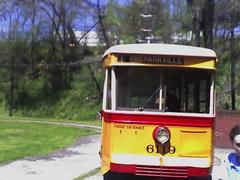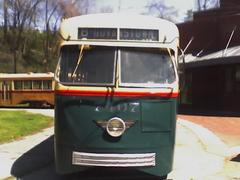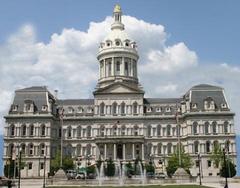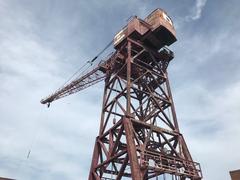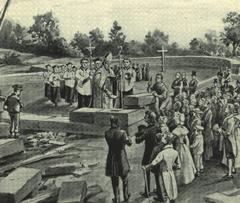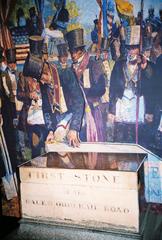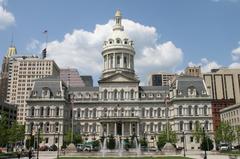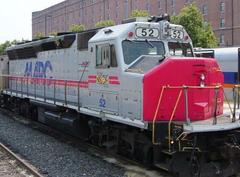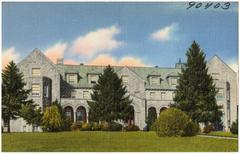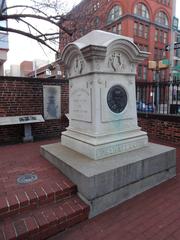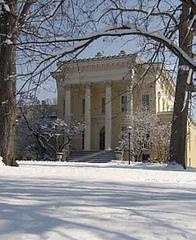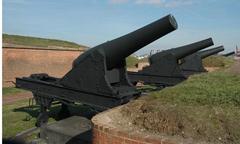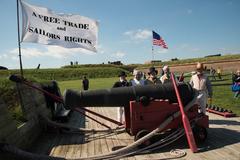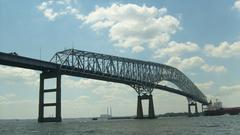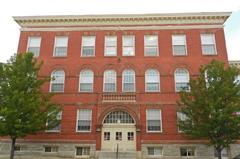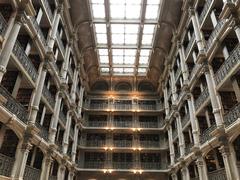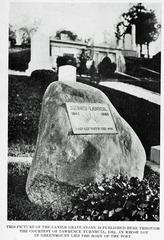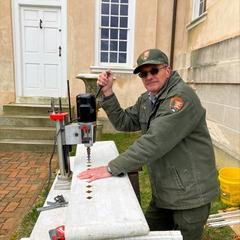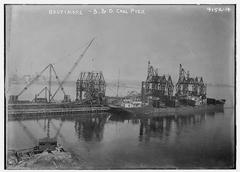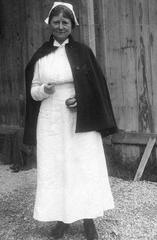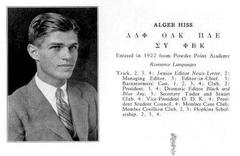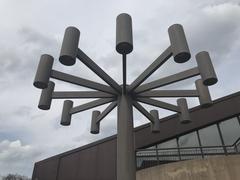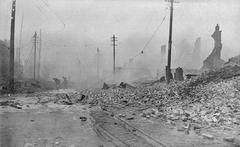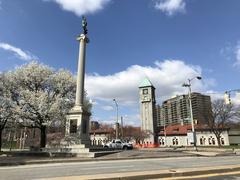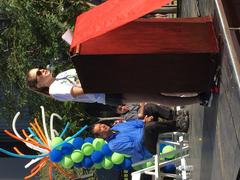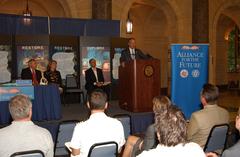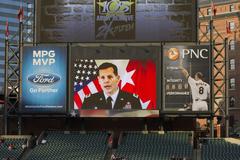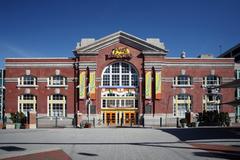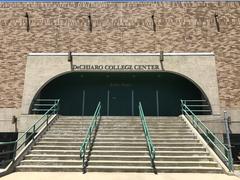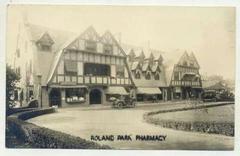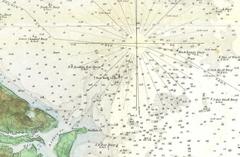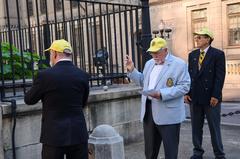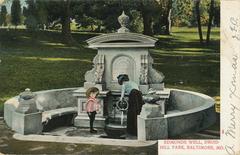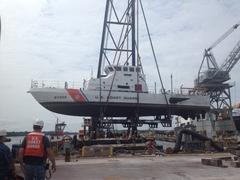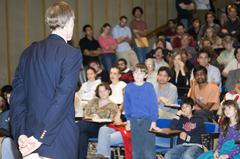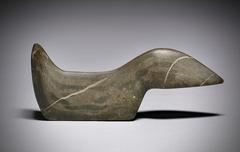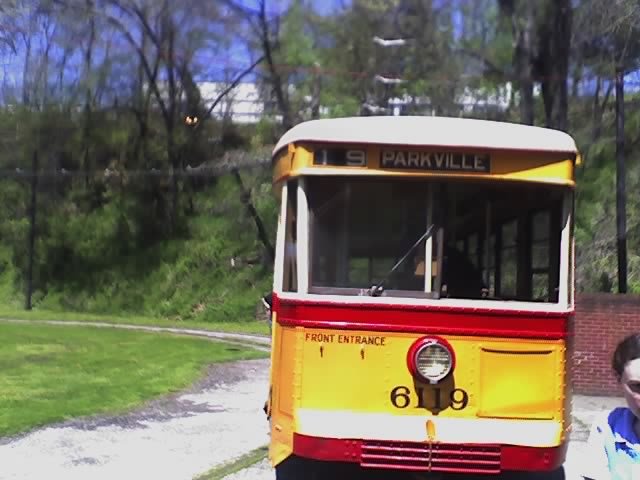
Baltimore Streetcar Museum: Visiting Hours, Tickets, and Visitor Information
Date: 14/06/2025
Introduction
The Baltimore Streetcar Museum (BSM) serves as a living tribute to the city’s rich transit heritage, offering visitors a hands-on journey through the evolution of Baltimore’s streetcar system. Founded in 1966, the museum preserves and operates historic streetcars, allowing guests to experience firsthand the vehicles and technologies that once shaped Baltimore’s urban landscape. This comprehensive guide provides detailed information on visiting hours, ticket prices, accessibility, travel tips, and what to expect during your visit, ensuring you make the most of your time at one of Baltimore’s most cherished historical sites (Baltimore Streetcar Museum History; Baltimore Heritage).
Table of Contents
- Introduction to Baltimore Streetcar Museum
- Historical Overview: From Origins to Preservation
- Museum Establishment and Expansion
- Visitor Experience: What to Expect
- Visiting Hours, Ticket Prices, and Practical Information
- Current Exhibits and Restoration Projects
- Future Plans and Community Partnerships
- Frequently Asked Questions (FAQ)
- Plan Your Visit and Stay Connected
- References
Historical Overview: From Origins to Preservation
Baltimore’s Streetcar Era
Streetcars began serving Baltimore in 1859, initially drawn by horses and later evolving through steam, cable, and electric power. By 1885, Baltimore was among the first American cities to launch an electric streetcar line, rapidly expanding its network to connect downtown with outlying neighborhoods like Hampden (Baltimore Heritage). The system, managed in its heyday by the United Railways and Electric Company (UREC), was integral to Baltimore’s growth and social fabric. Unlike many cities, Baltimore’s streetcars were not racially segregated, reflecting a unique chapter in American transit history (Maryland Center for History and Culture).
Decline and the Drive for Preservation
After World War II, rising automobile ownership and suburban expansion led to a decline in streetcar usage. By 1963, the last streetcar had run, leaving behind unused tracks and abandoned facilities (Baltimore Post-Examiner). Early preservationists, including George F. Nixon and local enthusiasts, recognized the importance of saving representative streetcars, leading to the eventual foundation of the Baltimore Streetcar Museum (Baltimore Streetcar Museum History).
Museum Establishment and Expansion
Founding the Museum
In response to the need for a permanent home for Baltimore’s streetcar legacy, the BSM was established in 1966. The city provided a site along the former Maryland & Pennsylvania Railroad right-of-way in the scenic Jones Falls Valley. Volunteers constructed a modern carhouse, laid tracks, and restored both the vehicles and supporting infrastructure (Baltimore Streetcar Museum History). The museum officially opened its doors to the public on July 3, 1970, quickly becoming a beloved destination for residents and visitors.
Growth and Resilience
Over the decades, the museum has grown its collection to include streetcars from Baltimore and other American cities, illustrating the broader story of urban transit. Restoration is a complex, labor-intensive process often managed by skilled volunteers. The museum has overcome significant challenges, including major flooding events in 1972 and 1979, each time successfully restoring operations and continuing its educational mission (Baltimore Streetcar Museum History).
Expansion and Future Vision
To accommodate its growing collection and visitor base, BSM plans to expand its campus, including the restoration of the historic 1910 Maryland & Pennsylvania Railroad roundhouse (Baltimore Sun). The expansion will feature new tracks, improved visitor amenities, and enhanced educational spaces. These efforts aim to secure the museum’s future and ensure that Baltimore’s transit history remains accessible for generations to come.
Visitor Experience: What to Expect
Streetcar Rides and Guided Tours
A highlight of any visit is riding authentic, restored streetcars along the museum’s demonstration track. Rides typically last about 20 minutes, departing every 30 minutes during open hours. Knowledgeable volunteer motormen and conductors share stories and technical details, bringing Baltimore’s streetcar era to life (Baltimore Heritage).
Guided tours offer deeper insights into the history and mechanics of the streetcars, with behind-the-scenes access to the restoration carhouse available during select hours. Volunteers, many with backgrounds in transit or preservation, are on hand to answer questions and engage with visitors of all ages.
Special Events and Community Engagement
The museum hosts annual events such as the “Santa’s Streetcar” in December, vintage vehicle parades, and themed weekends celebrating transit history. These events offer additional activities, extended hours, and opportunities for hands-on learning. BSM’s strong volunteer community and partnerships with local organizations foster a welcoming, intergenerational atmosphere (Wanderlog).
Facilities, Accessibility, and Amenities
Facilities include a visitor center with exhibits, a small gift shop, restrooms, and free onsite parking. While some historic streetcars may have steps and narrow aisles, the museum strives for accessibility; the visitor center and much of the grounds are wheelchair accessible. Outdoor picnic areas are available, and the museum encourages photography throughout the site.
Pair your visit with nearby attractions such as Cylburn Arboretum, Lake Roland Park, and the vibrant Hampden neighborhood for a full Baltimore cultural experience.
Visiting Hours, Ticket Prices, and Practical Information
Location: 1911 Falls Road, Baltimore, MD 21211
Typical Hours:
- Sundays (March–December): 12:00 PM – 5:00 PM
- Saturdays (June–October): 12:00 PM – 5:00 PM
- Closed weekdays except for special events or pre-arranged group visits
Ticket Prices (June 2025):
- Adults: $15
- Seniors (60+): $10
- Children (4–11): $10
- Children under 4: Free
Admission includes unlimited streetcar rides and access to all exhibits. Tickets may be purchased onsite or online; credit cards are accepted.
Getting There:
The museum is accessible by car (free parking onsite) and by public transit (MTA bus routes 15 and 27). The nearest Light Rail stop is also within walking distance.
Accessibility:
The visitor center and grounds are wheelchair accessible. Some vintage streetcars have limited accessibility. Contact the museum in advance for specific needs.
Group Visits and Rentals:
Groups, school field trips, and private event rentals are welcome with advance reservation.
Current Exhibits and Restoration Projects
The BSM’s collection features a range of restored streetcars—such as the 1900 United Railways and Electric Company convertible and the 1944 Baltimore Transit Company car #7407—demonstrating the evolution of transit technology. Ongoing restoration projects are visible to visitors, including work on rare cars from Philadelphia and San Diego. The Maryland Rail Heritage Library, formed through a partnership with the Baltimore Chapter of the National Railway Historical Society, houses extensive archives for researchers and the public (Baltimore NRHS).
Future Plans and Community Partnerships
The museum’s strategic vision includes:
- Restoring the historic roundhouse for expanded displays and educational spaces
- Extending the demonstration track for longer scenic rides
- Enhancing digital resources with virtual tours and online archives
- Deepening partnerships with schools, universities, and local organizations for educational outreach
Funding comes from admission fees, memberships, grants, and donations. Community involvement remains central, with opportunities for volunteering and supporting restoration efforts (Baltimore Sun).
Frequently Asked Questions (FAQ)
Q: What are the Baltimore Streetcar Museum visiting hours?
A: Sundays (March–December) and Saturdays (June–October) from 12:00 PM to 5:00 PM. Verify on the official website for seasonal changes.
Q: How much are tickets?
A: Adults $15; Seniors (60+) and Children (4–11) $10; Children under 4 free.
Q: Can I ride the streetcars?
A: Yes, unlimited rides are included with admission.
Q: Is the museum accessible?
A: The visitor center is accessible; some historic streetcars may have limitations.
Q: Are group tours and private events available?
A: Yes, with advance arrangement.
Q: Are special events hosted?
A: Yes, including seasonal events and historical celebrations. Details are on the museum’s website.
Plan Your Visit and Stay Connected
Experience Baltimore’s transit history at the BSM—ride historic streetcars, explore interactive exhibits, and learn from passionate volunteers. For current hours, ticketing, and event schedules, visit the official Baltimore Streetcar Museum website. Follow the museum on social media for updates and event announcements.
Download the Audiala app for interactive audio guides and maps of Baltimore’s historical sites. Explore our related articles to enrich your cultural itinerary and deepen your understanding of Baltimore’s heritage.
References
- Baltimore Streetcar Museum History
- Baltimore Heritage
- Baltimore Post-Examiner
- Baltimore Sun
- Wanderlog
- Baltimore NRHS
